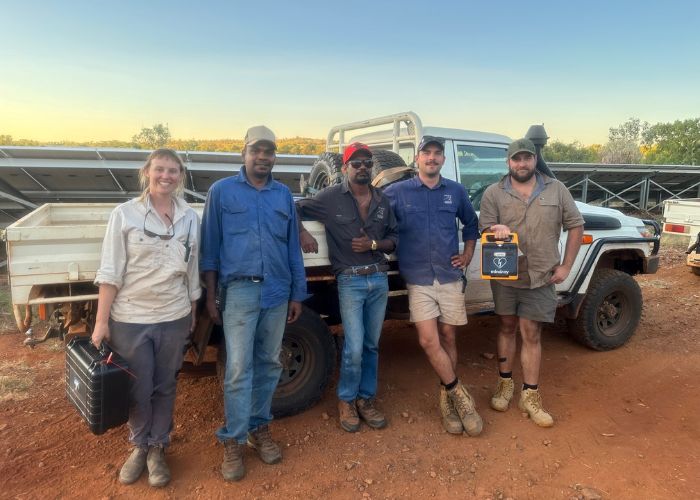It’s far from business as usual at Mornington-Marion Downs Wildlife Sanctuary (Bunuba and Kija country) in the Kimberley, but the Kimberley team is slowly returning to the field in the hopes of restoring pre-flooding routines and important conservation activities.
In early January 2023, Australian Wildlife Conservancy’s (AWC) Mornington-Marion Downs Wildlife Sanctuary, and its neighbours in the central Kimberley entered a state of emergency when ex-Tropical Cyclone Ellie inundated the region with record rainfall and flooding. AWC staff and visiting researchers were evacuated by helicopter as huge amounts of rain overwhelmed the Martuwarra-Fitzroy River catchment. Over the seven-day period to 3 January, Dimond Gorge received 831 mm of rain (around 96% of the average annual rainfall), the Fitzroy Bluff became an inland island, Annie Creek turned into a moving mass of water and the Adcock River broke its banks, backfilling into Mornington’s operations base.
 Larissa Potter/AWC
Larissa Potter/AWC
In the weeks following the floods and as water levels receded, AWC deployed a team to conduct a damage assessment. While nearby Charnley River-Artesian Range Wildlife Sanctuary sustained minimal damage, Mornington-Marion Downs suffered significant loss with buildings inundated with water, leaving their contents muddy and jumbled, and their infrastructure infiltrated by mold.
“The flooding, in terms of the sheer volume of water throughout the area, was certainly something that none of our team had witnessed before,” Tim White, AWC Chief Operations Officer explained. “Water exceeded ceiling levels inside many of the Mornington facilities and displaced items such as furniture, equipment and people’s possessions throughout the site. Equipment such as fuel pods and containers moved from their footings and toppled, and now we’re seeing the subsequent impact of mold in sheds.”
“The loss of facilities has been significant, and the restoration program will continue at least into 2024.”
 Larissa Potter/AWC
Larissa Potter/AWC
Fortunately, four houses and the main workshop at Mornington-Marion Downs were spared from complete inundation. As a first priority, electricity and water facilities were restored to those parts of the sanctuary late last month, and these buildings have been deemed safe to re-occupy, supporting short-term stays by staff.
Now, at the end of the (very big) wet season and four months post-floods, researchers, ecologists and operations teams have progressively started returning to the sanctuary. With road access becoming feasible in the last few weeks.
The Kimberley team led the way, working to re-establish 4WD road access to enable the delivery of AWC’s planned burn program on Mornington-Marion Downs. While this is a significant step forward, AWC is still potentially months away from having contracted grading machinery on site for more substantial road repairs.
 Larissa Potter/AWC
Larissa Potter/AWC
The team also cleared some of the tall grass and weeds which shot up around the buildings since the floods, and commenced the early dry season prescribed burning program. This award-winning fire management program is designed to break up the old fuel and stitch together older fire scars to prevent unplanned wildfires. Ground-based burning has also been used to put in place fire breaks to protect Purple-crowned Fairy-wren habitat along Annie Creek and the remaining infrastructure at Mornington around the Tirralintji and Yulumbu Communities.
In the coming weeks, land managers will also prepare for fence repair work which will involve reconstructing fences, many of which were damaged by floods in the southern region of Mornington.

This week, researchers from Monash University will return to the sanctuary for their first visit since the evacuation in January. The team will resume a 17-year research program into the Purple-crowned Fairy-wren population at Mornington, one of the longest ongoing field studies of a bird population in Australia.
“We are making progress in reestablishing our conservation program, but the overall scope of the restoration is a massive job,” Tim explained. “We do have plans to restore our facilities and we hope to make headway in the coming weeks.”
Support Australian Wildlife Conservancy's science-led conservation work and safeguard the future of Australia's native species
Donate Now